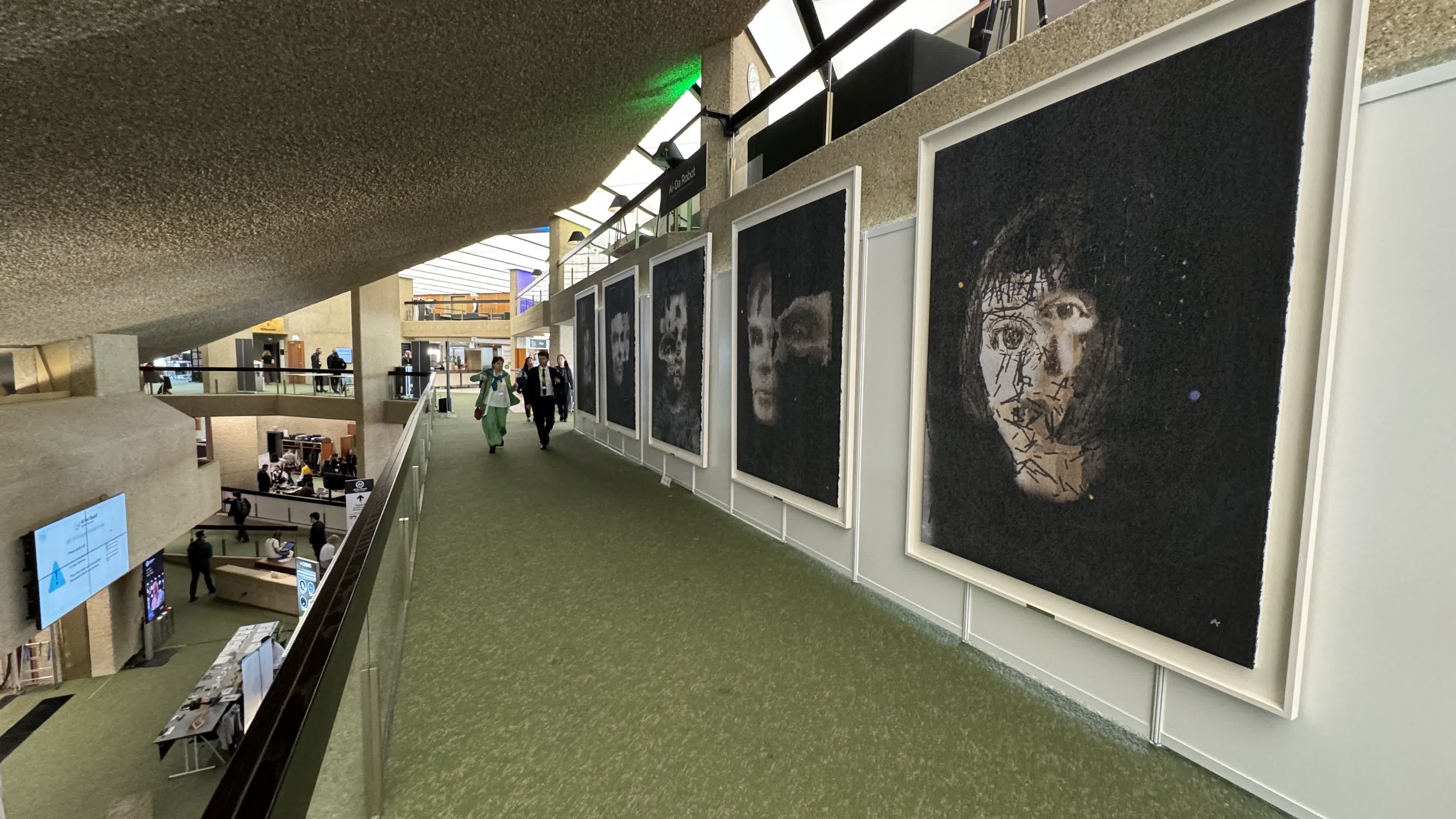Serving tech enthusiasts for over 25 years.
TechSpot means tech analysis and advice you can trust.
What just happened? A piece of artwork created by a humanoid robot is set to go under the hammer at the prestigious Sotheby's auction house later this month, and it's expected to fetch at least $120,000. Titled AI God, the 7-foot-tall piece depicts the late computer pioneer Alan Turing, whose groundbreaking work in the 1950s laid the foundation for the field of artificial intelligence.
It's a fitting subject for a painting by Ai-Da, hailed as the world's first ultra-realistic robot artist. Turing famously predicted in 1952 that it would take at least 100 years for a machine to pass his Turing test.
The robot's name is a nod to Ada Lovelace, the mathematician regarded as the first computer programmer. Ai-Da has been turning heads and making headlines since her debut in 2019. With her realistic yet uncanny human face, art-student chic outfits, bob-style haircut, and bionic hands capable of painting, she feels like something straight out of a Black Mirror episode.

However, Ai-Da is very real – the product of a collaboration between British art dealer Aidan Meller, robot makers Engineered Arts, and researchers from Oxford University.
She works by "watching" the canvas through cameras in her eyes, which feed data into AI algorithms that guide her robotic hands with precise movements. Her technique is unique as well: rather than using long brushstrokes, she delicately paints tiny lines that gradually form a complete picture.
So far, Ai-Da has created several portraits, including those of the late Queen Elizabeth II, music icons like Paul McCartney, and celebrities such as Billie Eilish. She also paints abstract art. However, it's her Turing portrait that has garnered the most attention, having been exhibited at a UN summit earlier this year and described as "haunting."
Art isn't her only talent. Ai-Da also has basic language abilities, thanks to an internal AI model.
According to Meller, the purpose of Ai-Da is to highlight the "tensions" in our increasingly AI-driven world, questioning the boundaries between digital and physical, human and machine.
"In the time of increasing use of AI, online avatars, AI chatbots, Alexa and Siri, Ai-Da as a robotic artist is acutely relevant," he wrote on Ai-Da's website.
Of course, Ai-Da lacks self-awareness, so she's unaware of the staggering price her Turing portrait is expected to fetch. Yet her lack of consciousness underscores that Turing's prediction about intelligent machines has, so far, held true.
Image credit: Ai-Da Robot Studio/PA


/cdn.vox-cdn.com/uploads/chorus_asset/file/25697380/STK071_APPLE_A.jpg)



:quality(85):upscale()/2024/10/31/831/n/49351773/b7bf33836723d2f0643c55.51137847_.jpg)
:quality(85):upscale()/2024/10/30/955/n/42301552/28e49c1e6722ab5b973b38.46745005_.jpg)

 English (US) ·
English (US) ·